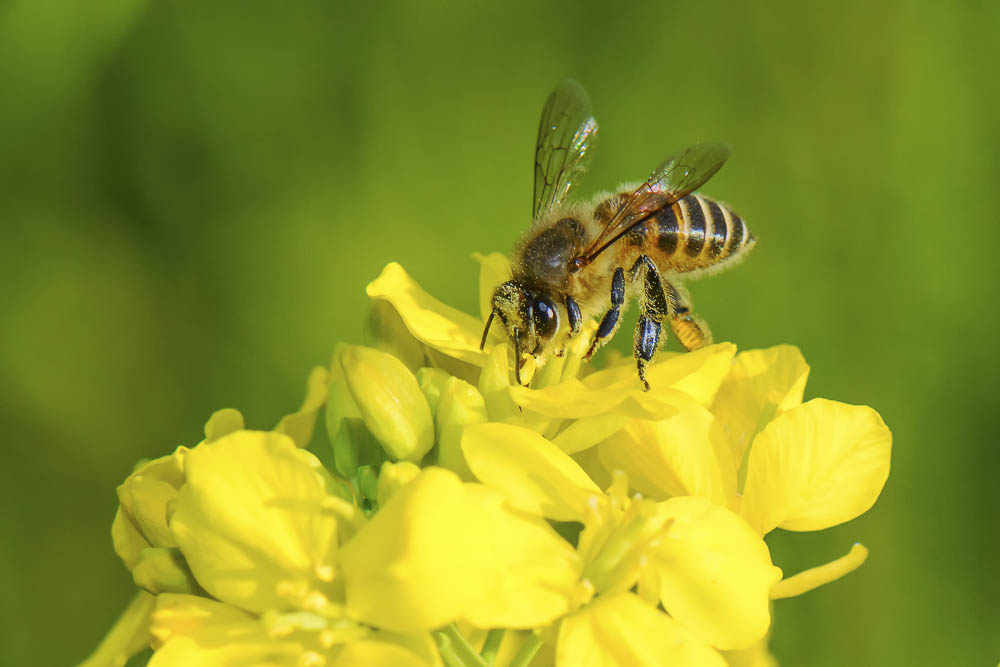
Honey Bee collecting pollen on yellow rape flower.
Less than one percent of Minnesota’s original prairie habitat exists today, and that is having an impact on bees and other pollinator populations. The decline of pollinators is not just a Minnesota problem but a national problem. National Pollinator Week, June 19-25, is a time to recognize the benefits and need for pollinators and raise awareness of their plight due to loss of habitat.
In honor of National Pollinator Week, Dakota Electric Association is announcing plans to plant pollinator habitat at local substations and an upcoming solar installation.
Since many Dakota Electric substations are located in urban areas, they are surrounded by grass. However, the cooperative is announcing plans to restore natural prairie habitat around a couple of rural substations as a pilot project.
“We have been looking for the right locations to plant pollinator habitat,” said Craig Knudsen, Dakota Electric’s land use manager. “The solar site in Marshan Township seems ideal for this type of natural habitat. When it comes to our substations, we want to evaluate the benefits and the impact, relating to both reliability and maintenance.”
The substations, one in Inver Grove Heights and one just north of Red Wing, are properties that are compatible for this type of natural restoration improvement due to location and typography. A naturally restored environment has tangible benefits, such as reduced fertilizer and chemical weed control and reduced mowing, besides assisting the pollinator population. These projects will help Dakota Electric assess the overall impacts, including costs and benefits, and determine if more locations could benefit from habitat restoration.
Beth Markhart from Prairie Restorations is managing the projects for Dakota Electric.
“The locations will be planted with ecologically appropriate species from the Midwest once site preparation is completed in early summer,” Markhart said. “The final habitat will be a perfect environment for bees, butterflies and other pollinators.”
Prairie Restorations said it may take up to three years to get the landscape habitat fully functioning, but natural benefits will already be seen in the first year.


